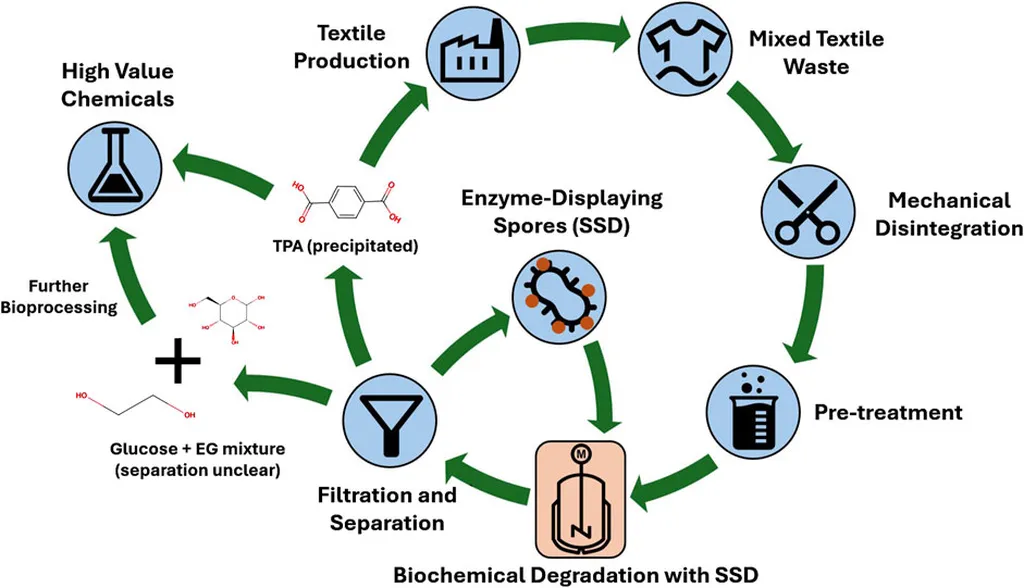In the relentless pursuit of sustainable fashion, a groundbreaking study has emerged from the Josef Ressel Centre “Recovery Strategies for Textiles” at the University of Applied Sciences Wiener Neustadt, led by Jeannie Egan. The research, published in the journal *Frontiers in Bioengineering and Biotechnology* (which translates to *Frontiers in Biotechnology and Bioengineering*), delves into the world of cellulase enzymes, offering a promising solution to the mounting problem of textile waste.
The textile industry, particularly the fast fashion sector, has seen exponential growth, leaving behind a trail of discarded polyester-cotton blends. These mixed fabrics pose a significant recycling challenge due to the difficulty in separating the two materials. Current methods fall short, but Egan and her team have turned to nature’s own tools—cellulase enzymes—to tackle this issue.
The study meticulously evaluated 35 commercial cellulase formulations, each designed for various applications like biopolishing, stonewashing, or biomass degradation. The team conducted a battery of biochemical assays to characterize these enzymes, categorizing them based on their physical state, optimal pH and temperature, and intended use. This comprehensive analysis revealed intriguing trends, setting the stage for practical evaluation.
Ten formulations were selected for a real-world test: separating cotton from polyester-cotton blends in a controlled reactor system. The results were eye-opening. Conventional enzyme activity assays didn’t directly correlate with reactor performance, suggesting that lab-based tests might not fully predict real-world efficiency. This discrepancy underscores the complexity of enzyme behavior in industrial settings.
Egan introduced a critical new metric—protein efficiency—to evaluate enzyme efficacy and economic viability. This metric, defined as the specific activity relating fiber separation efficiency to the protein content, proved instrumental in identifying high-performing formulations. The most effective enzymes exhibited a balanced profile, with high endoglucanase activity supported by moderate cellobiohydrolase and minor beta-glucosidase activities.
“The findings suggest that a balanced enzyme cocktail is key to optimizing cotton removal from polyester-cotton blends,” Egan explained. “This balance is crucial for both performance and economic viability in industrial applications.”
The implications of this research extend beyond the textile industry. The energy sector, which often deals with complex waste streams, could benefit from similar enzymatic approaches to break down and recycle mixed materials. The study highlights the need for tailored enzyme formulations and the importance of real-world testing to bridge the gap between lab results and industrial applications.
As the world grapples with the challenges of sustainability, Egan’s work offers a glimmer of hope. By harnessing the power of cellulase enzymes, we can move towards a more circular economy, where waste is minimized, and resources are efficiently recycled. The journey is just beginning, but the potential is immense.
“This research is a stepping stone towards more sustainable practices in the textile industry and beyond,” Egan concluded. “It’s about finding the right tools and strategies to make our processes more efficient and environmentally friendly.”
In a world increasingly conscious of its environmental impact, Egan’s work serves as a reminder that nature often holds the solutions to our most pressing challenges. By looking to the natural world for inspiration and innovation, we can pave the way for a more sustainable future.

